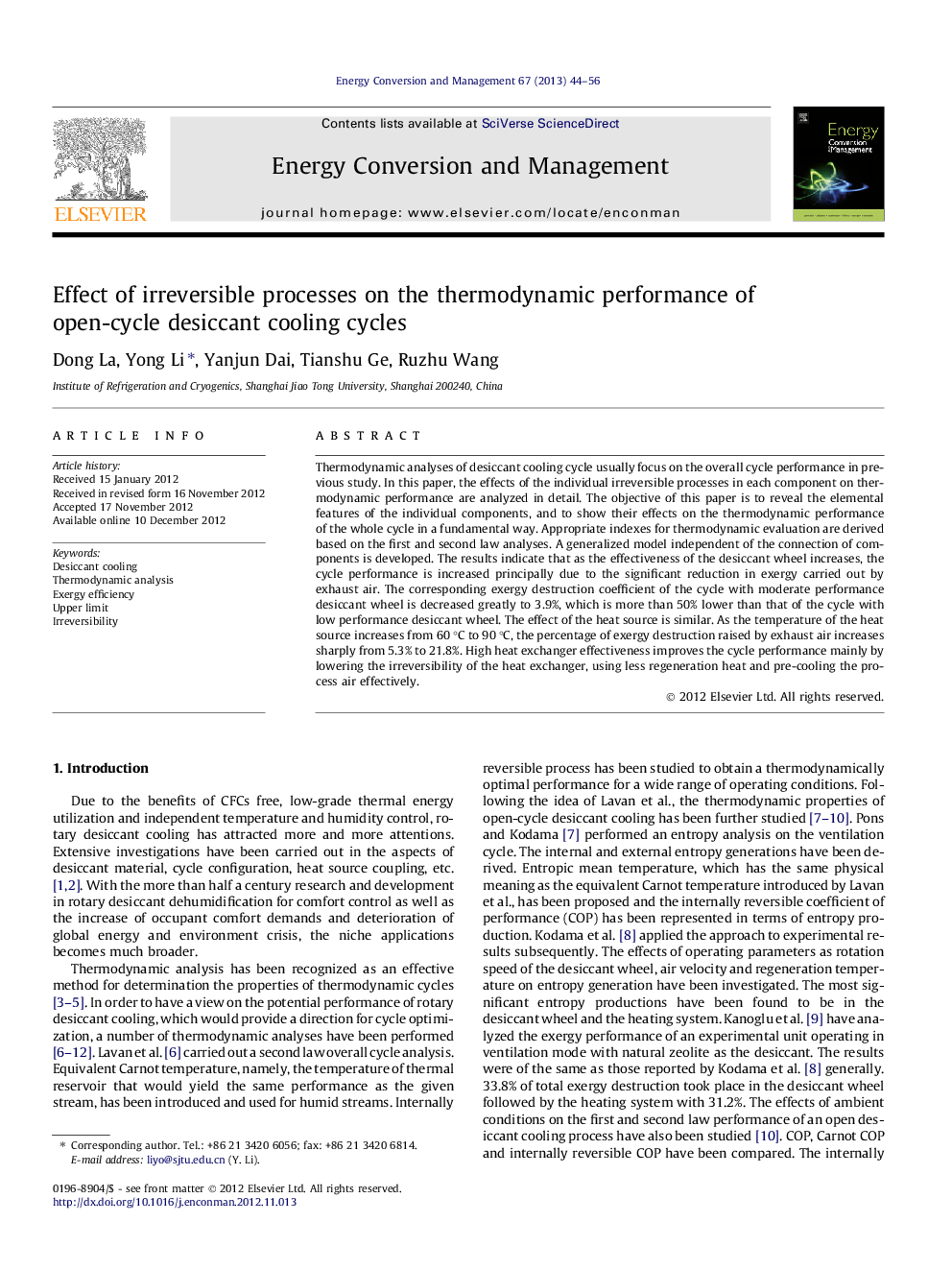| Article ID | Journal | Published Year | Pages | File Type |
|---|---|---|---|---|
| 765716 | Energy Conversion and Management | 2013 | 13 Pages |
Thermodynamic analyses of desiccant cooling cycle usually focus on the overall cycle performance in previous study. In this paper, the effects of the individual irreversible processes in each component on thermodynamic performance are analyzed in detail. The objective of this paper is to reveal the elemental features of the individual components, and to show their effects on the thermodynamic performance of the whole cycle in a fundamental way. Appropriate indexes for thermodynamic evaluation are derived based on the first and second law analyses. A generalized model independent of the connection of components is developed. The results indicate that as the effectiveness of the desiccant wheel increases, the cycle performance is increased principally due to the significant reduction in exergy carried out by exhaust air. The corresponding exergy destruction coefficient of the cycle with moderate performance desiccant wheel is decreased greatly to 3.9%, which is more than 50% lower than that of the cycle with low performance desiccant wheel. The effect of the heat source is similar. As the temperature of the heat source increases from 60 °C to 90 °C, the percentage of exergy destruction raised by exhaust air increases sharply from 5.3% to 21.8%. High heat exchanger effectiveness improves the cycle performance mainly by lowering the irreversibility of the heat exchanger, using less regeneration heat and pre-cooling the process air effectively.
► Effects of irreversible processes on the performance of desiccant cooling cycle are identified. ► The exergy destructions involved are classified by the properties of the individual processes. ► Appropriate indexes for thermodynamic evaluation are proposed based on thermodynamic analyses.
